Abstract
1 The antinociceptive effects of morphine and buprenorphine given intrathecally and subcutaneously have been compared in the conscious rat. 2 In the paw pressure test, when given subcutaneously buprenorphine 0.001-0.1 mg/kg s.c., was approximately 100 times more potent than morphine 0.1-3 mg/kg s.c., but in the hot plate test, buprenorphine 0.03-3.0 mg/kg s.c., produced a bell-shaped dose-response curve of low maximum effect and was about equipotent with morphine 0.03-3 mg/kg s.c. 3 When given intrathecally buprenorphine 10 micrograms and morphine, 10-60 micrograms, were approximately equipotent in both paw pressure and hot plate tests. Furthermore, morphine produced these effects at 1/25th of the minimum effective parenteral dose while the dose of buprenorphine exceeded the parenteral dose. 4 It is concluded that the predominant site of the analgesic action of buprenorphine is supraspinal. The significance of these findings in relation to the role of spinal opiate receptors is discussed.
Full text
PDF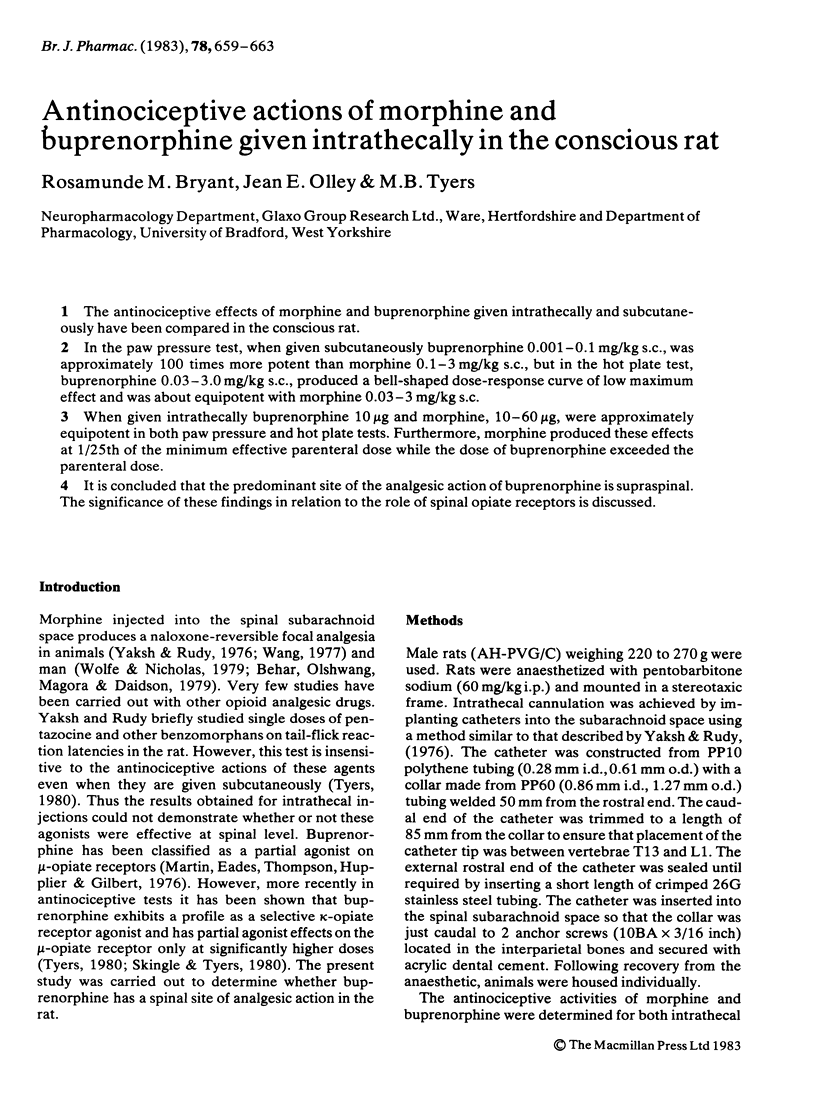
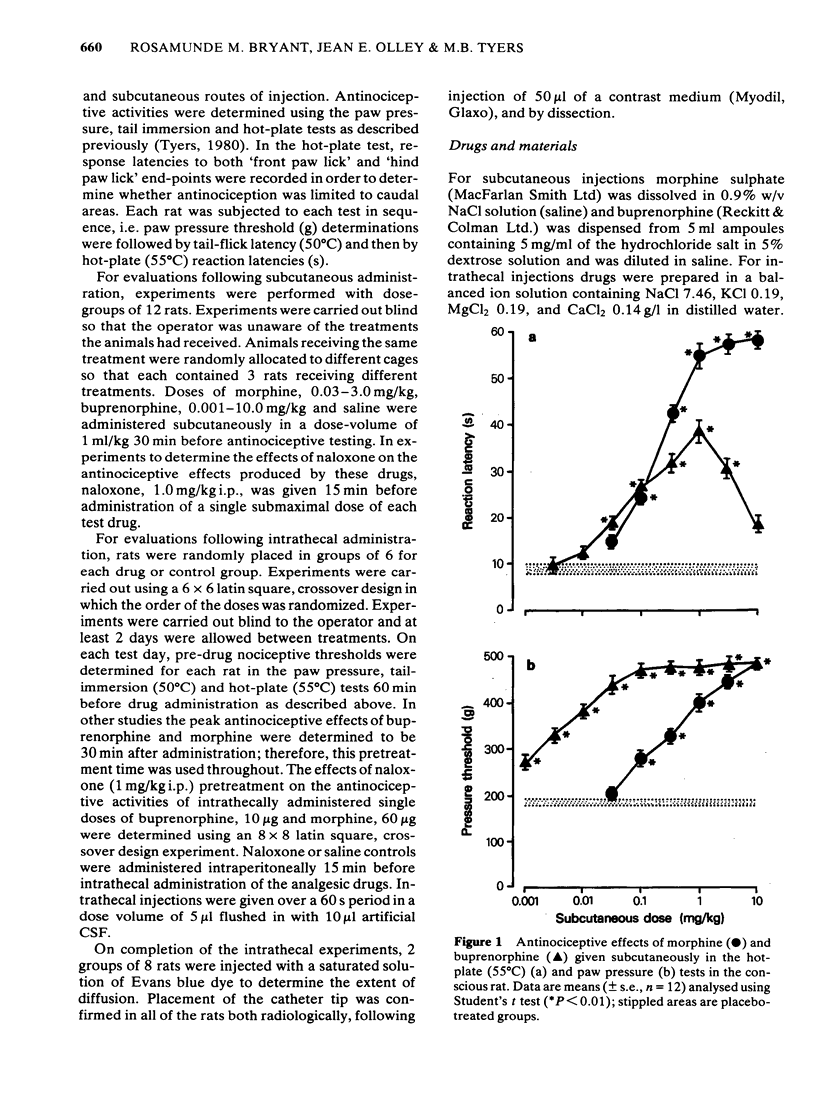
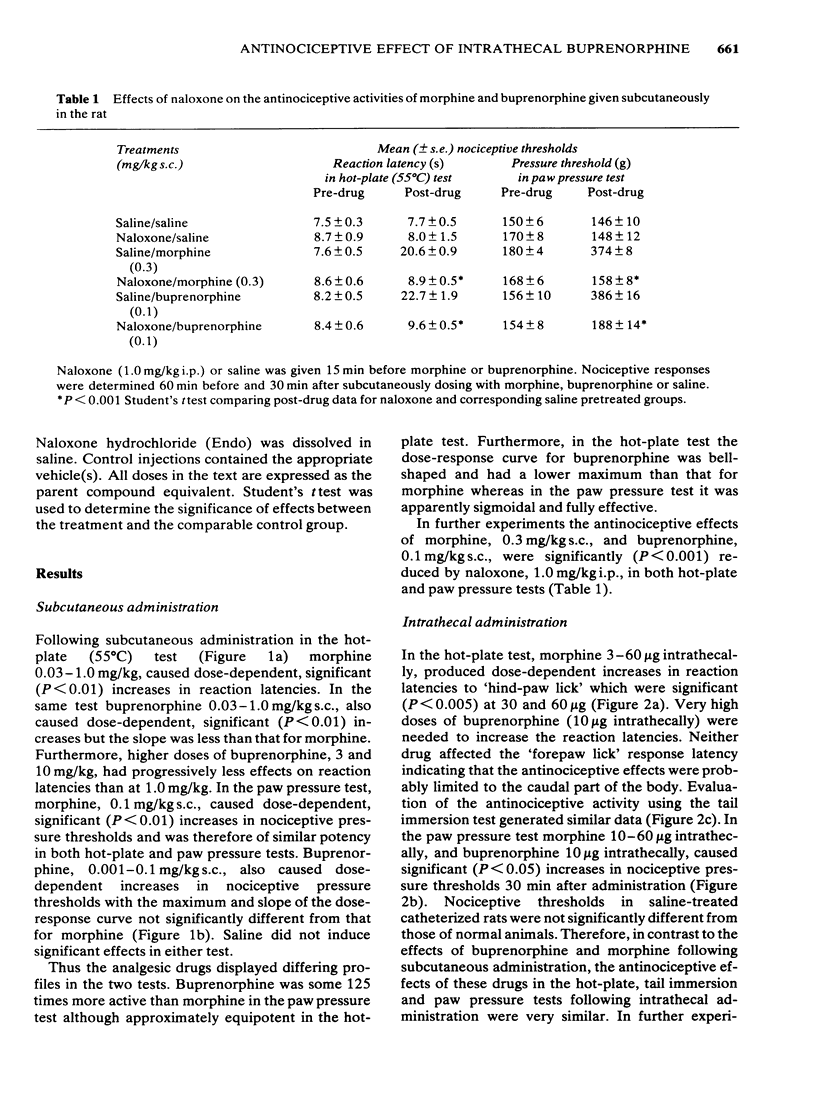
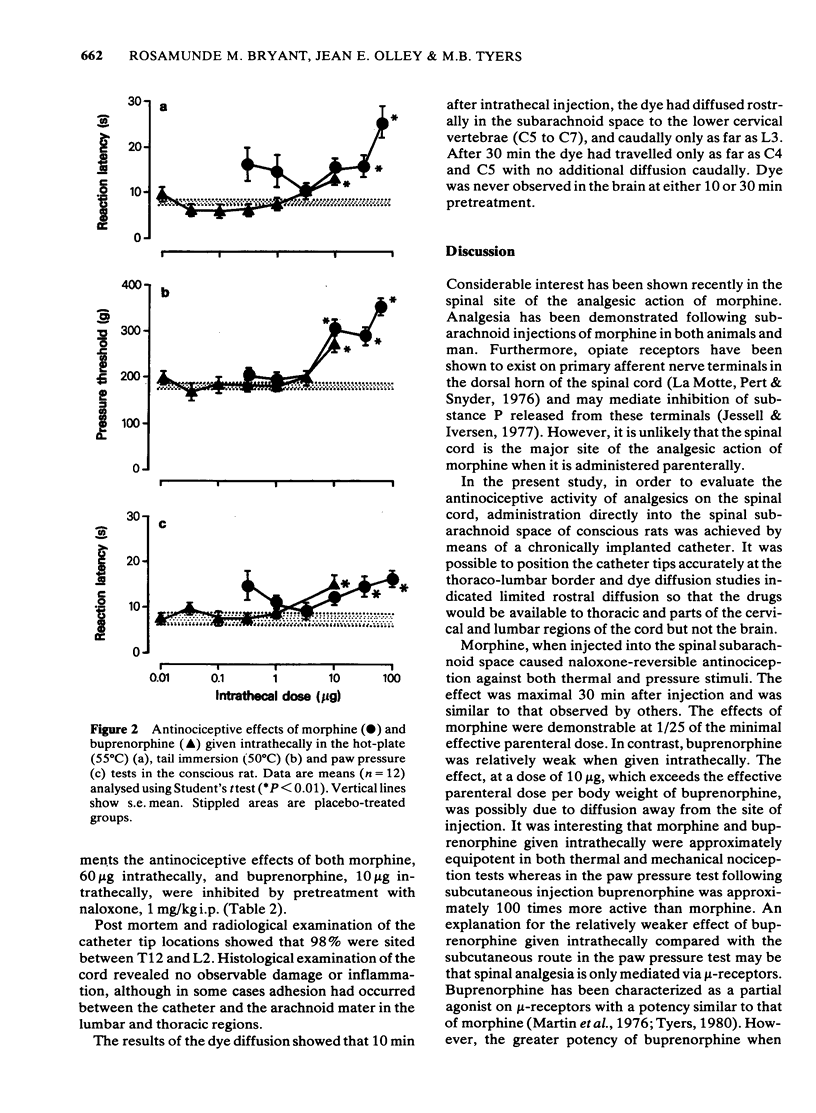
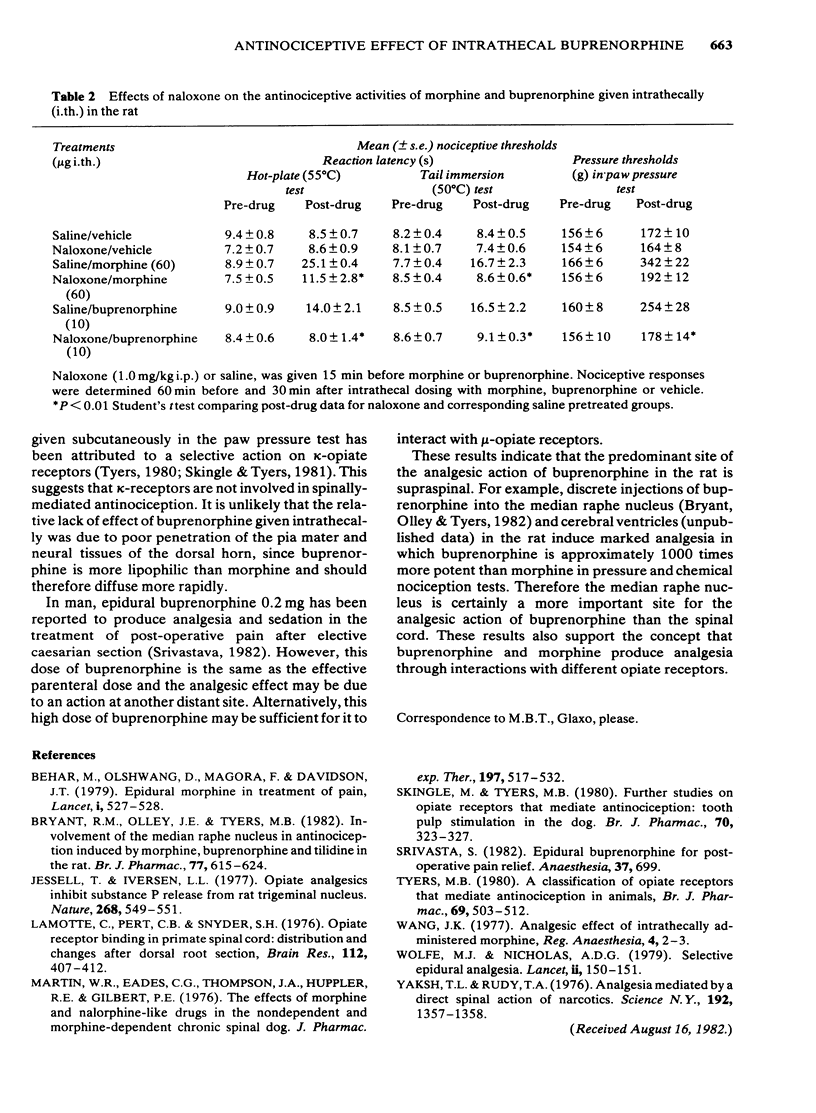
Selected References
These references are in PubMed. This may not be the complete list of references from this article.
- Behar M., Magora F., Olshwang D., Davidson J. T. Epidural morphine in treatment of pain. Lancet. 1979 Mar 10;1(8115):527–529. doi: 10.1016/s0140-6736(79)90947-4. [DOI] [PubMed] [Google Scholar]
- Bryant R. M., Olley J. E., Tyers M. B. Involvement of the median raphe nucleus in antinociception induced by morphine, buprenorphine and tilidine in the rat. Br J Pharmacol. 1982 Dec;77(4):615–624. doi: 10.1111/j.1476-5381.1982.tb09339.x. [DOI] [PMC free article] [PubMed] [Google Scholar]
- Jessell T. M., Iversen L. L. Opiate analgesics inhibit substance P release from rat trigeminal nucleus. Nature. 1977 Aug 11;268(5620):549–551. doi: 10.1038/268549a0. [DOI] [PubMed] [Google Scholar]
- Lamotte C., Pert C. B., Snyder S. H. Opiate receptor binding in primate spinal cord: distribution and changes after dorsal root section. Brain Res. 1976 Aug 13;112(2):407–412. doi: 10.1016/0006-8993(76)90296-1. [DOI] [PubMed] [Google Scholar]
- Martin W. R., Eades C. G., Thompson J. A., Huppler R. E., Gilbert P. E. The effects of morphine- and nalorphine- like drugs in the nondependent and morphine-dependent chronic spinal dog. J Pharmacol Exp Ther. 1976 Jun;197(3):517–532. [PubMed] [Google Scholar]
- Skingle M., Tyers M. B. Further studies on opiate receptors that mediate antinoception: tooth pulp stimulation in the dog. Br J Pharmacol. 1980 Oct;70(2):323–327. doi: 10.1111/j.1476-5381.1980.tb07939.x. [DOI] [PMC free article] [PubMed] [Google Scholar]
- Tyers M. B. A classification of opiate receptors that mediate antinociception in animals. Br J Pharmacol. 1980 Jul;69(3):503–512. doi: 10.1111/j.1476-5381.1980.tb07041.x. [DOI] [PMC free article] [PubMed] [Google Scholar]
- Wolfe M. J., Nicholas A. D. Selective epidural analgesia. Lancet. 1979 Jul 21;2(8134):150–151. doi: 10.1016/s0140-6736(79)90034-5. [DOI] [PubMed] [Google Scholar]
- Yaksh T. L., Rudy T. A. Analgesia mediated by a direct spinal action of narcotics. Science. 1976 Jun 25;192(4246):1357–1358. doi: 10.1126/science.1273597. [DOI] [PubMed] [Google Scholar]


